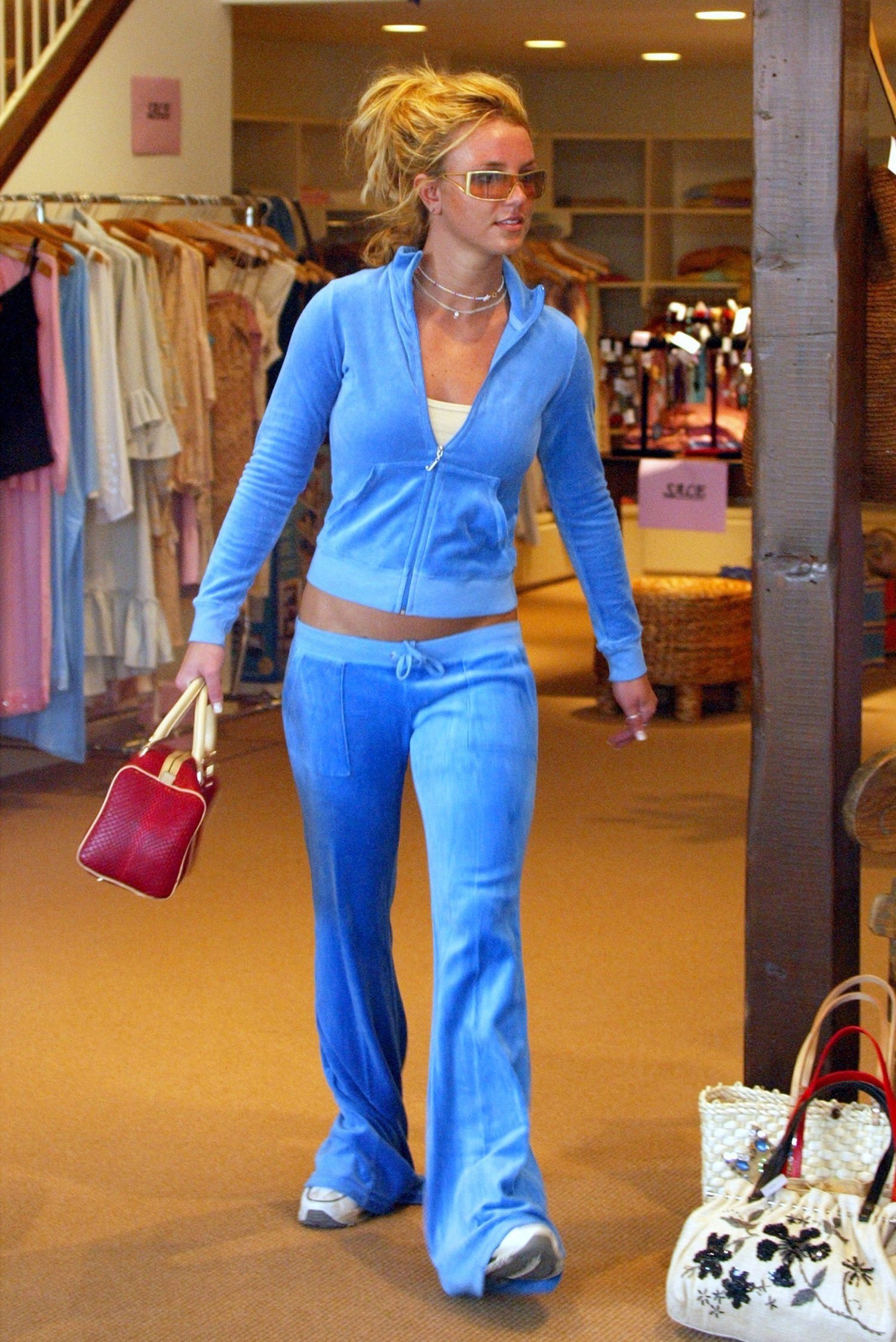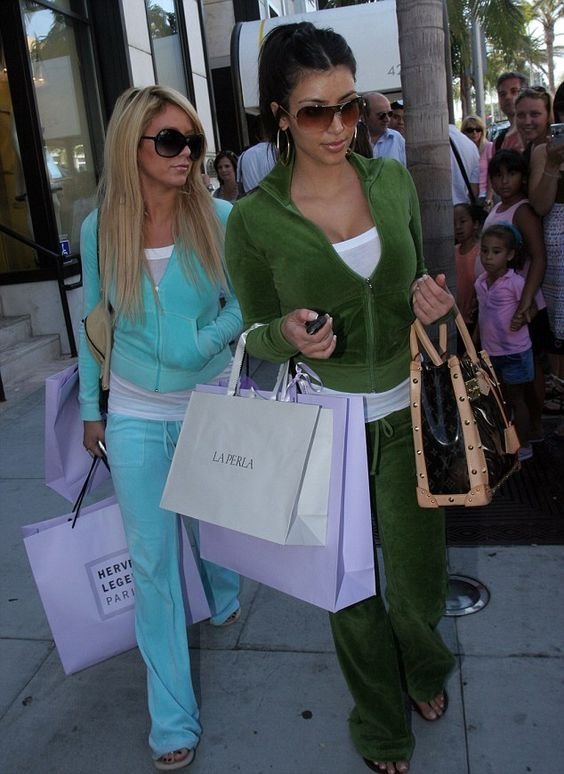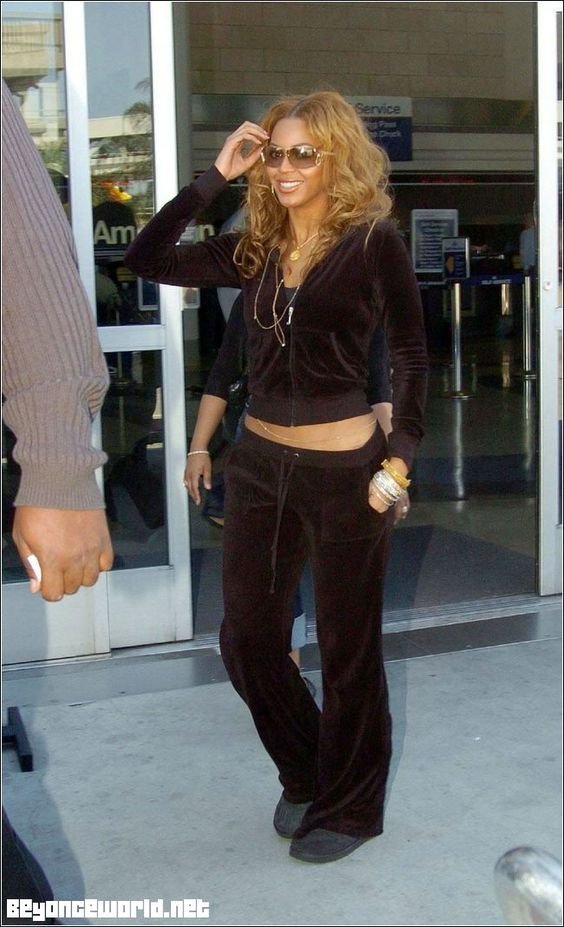The People’s Couture
In 1995, Gela Nash-Taylor and Pamela Skaist-Levy conceptualized the Juicy Couture brand, beginning its ground-breaking career with a line of colourful V-neck t-shirts. Before the brand emerged, the term “couture”, the French word for ‘sewing’, was solely used to refer to custom-made garments, very much associated with luxury fashion houses like Chanel, Dior and Versace. For a brand like Juicy Couture, with most products falling around $100 rather than tens of thousands, and mass-producing their garments in a petite to xl size range, the name is more ironic than literal.
Yet the unorthodox name was able to peak consumer interest as a ‘neo-couture’, or an accessible luxury, rather than accurately reflecting its meaning. But being a brand that makes a statement and develops conversation from its obnoxious name to the iconic rhinestone "Juicy" label across the back, it somehow does present a glimpse into couture’s purpose—a realm of fashion meant to spark opinions, feelings and thoughts.
Just the name Juicy Couture evokes a strong response from those who lived through the early to mid 2000s. Juicy Couture has never been everyone's style, especially generationally. My mom could not understand my sister and I's interest in the brand and was unwilling to buy it out of her own pocket.
“Juicy Couture served as the common ground between celebrity and non-celebrity fashion.”
But whether it was sneaking into your cool older sister’s room to steal a spritz of their perfume, seeing your celebrity idol paparazzied in their hot pink velour tracksuit in the pages of InStyle or owning a piece of this iconic Y2K brand yourself, Juicy Couture was everywhere. Among few others before, Juicy Couture served as the common ground between celebrity and non-celebrity fashion. Something that was made famous and worn by celebrities and mainstream society alike.
Juicy Couture emerged as the predecessor to some of the 2000s most iconic fashion brands. Most notably the tattoo-inspired Ed Hardy tees that were a staple for the Jersey Shore cast, and later emergence of Von Dutch, who made trucker hats suddenly cool and were photographed on almost every celebrity who was also sporting Juicy at the time. The popularity of all three was no surprise given the relaxed statement-making style they all gravitated towards in their design.
To compensate for their higher-than-average prices as a mass-produced brand, logo and label-heavy clothing was popular to tell people exactly who you were wearing and how much you spent on it, akin to the way high fashion was recognized. The rise of Juicy Couture paved the way for these somewhat similar brands to achieve such massive success. Though their similarities also seemed to contribute to their mutual decline, as each experienced a gigantic downfall when minimalist fashion cancelled out the rhinestones and velour of the 2000s.
By 2008, Juicy Couture officially began its descent from popularity. The US recession meant that the average person had less money to spend on their wants and companies were plummeting in value. On top of that, global fashion trends were shifting away from rhinestones and bright colours to more neutral, minimalist styles and discrete brand logos—everything Juicy Couture wasn’t.
In 2013, Juicy Couture was sold to Authentic Brands Group for $195 million, who , in complete dishonour to the luxury image it had successfully constructed, shut down its mall stores to become exclusively available at Kohl’s in the US. For a fashion brand based entirely around status and image, the move into low-end department stores was the most obvious representation of how much Juicy Couture had fallen off.
“Global fashion trends were shifting away from rhinestones and bright colours to more neutral, minimalist styles and discrete brand logos—everything Juicy Couture wasn’t.”
This depletion lasted until 2018, when nostalgic fashion started making its comeback and Juicy looked to its old fan base, now mostly in their 20s and 30s, to drive its success again. The overwhelming desire for matching sets and sweatsuits meant it was only a matter of time before the OG loungewear circulated back into mainstream trends and buyer interests. Fashion is in constant flux, with trends following a continuous cycle of peaks and valleys.
But no matter when these old trends return, they are always modernized to appeal to their new audience in some way, whether that be in design, or in the pillars that uphold the brand itself.
Many see Juicy Couture as everything wrong with Y2K fashion trends—gaudy, overpriced and size-exclusive. The return of Juicy Couture in recent years saw the need for a larger size selection (now carrying their iconic styles in sizes up to a 3X), representation and inclusivity that its original brand and the 2000s fashion industry substantially lacked.
Juicy, along with most Y2K trends for that matter are the essence of controversial fashion. There is a strong divide between those who love it and those who love to hate it with little room for impartiality.
Yet, the impact the brand had on celebrity and pop culture thanks to the likes of Paris Hilton, Britney Spears, the cast of Mean Girls and almost all of the biggest stars at the time has flaunted its legacy in the time capsules of film and photography, that instigated its first (and future) return. But Juicy has never been exclusively for the rich and famous. As a formative brand for accessible-luxury fashion, “the people’s couture” continues to make statements and bridge gaps in the fashion world.
Illustration by Aglaia Joithe




